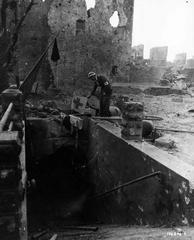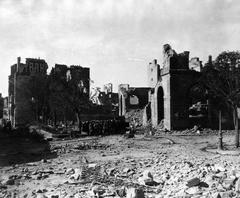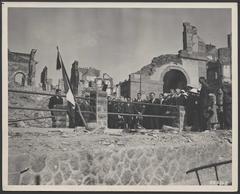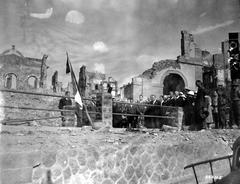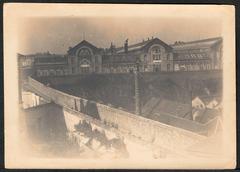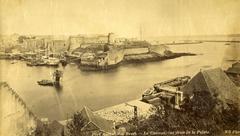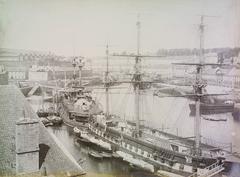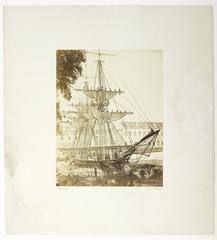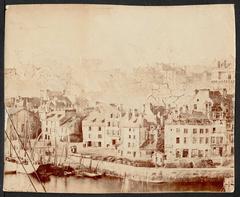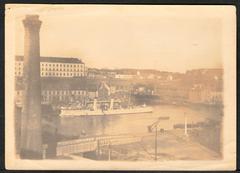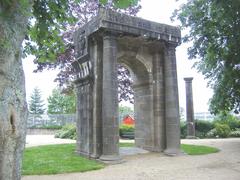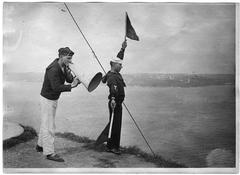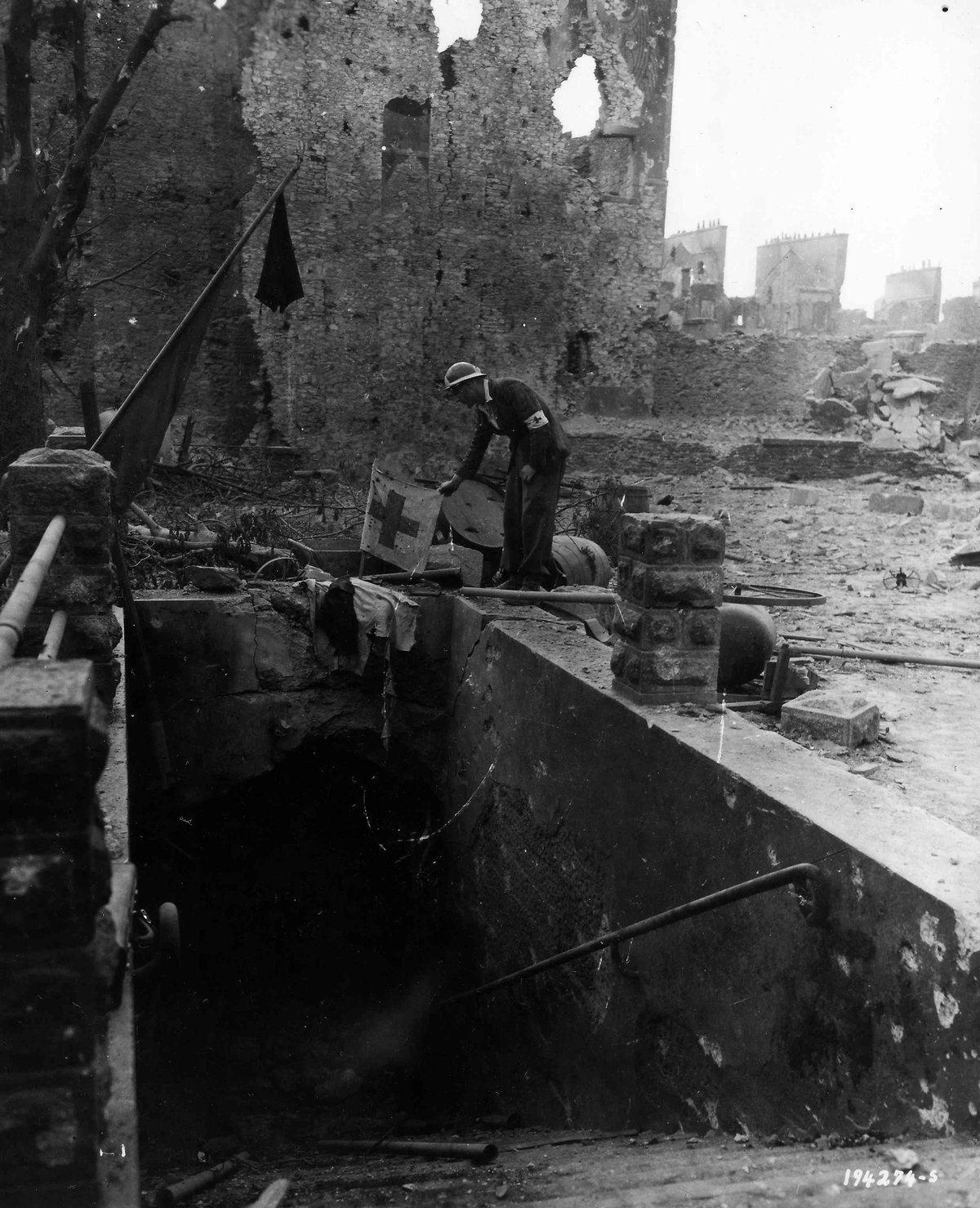
Abri Sadi-Carnot Visiting Hours, Tickets, and Brest Historical Sites Guide
Date: 14/06/2025
Introduction
The Abri Sadi-Carnot, nestled in central Brest, France, is one of the city’s most significant wartime monuments. Built during World War II and scarred by tragedy, this underground air-raid shelter is now a memorial dedicated to the resilience and suffering of Brest’s civilians. Whether you are a history enthusiast or a curious traveler, this comprehensive guide will help you plan your visit, understand the shelter’s historical context, and explore nearby Brest historical sites. For the latest visitor information, consult the Brest Métropole Tourisme website and official Brest city site.
Table of Contents
- Historical Background and Construction
- Visiting Abri Sadi-Carnot
- Frequently Asked Questions (FAQ)
- Nearby Attractions in Brest
- Visitor Recommendations
- Sources and Further Reading
Historical Background and Construction
Origins and Strategic Context
Brest, an essential port in Brittany, was heavily targeted during World War II due to its strategic naval base. After German occupation in June 1940, the city was subjected to persistent Allied bombing, particularly following the arrival of major German warships in 1941 (Wikipedia, Histoire de la Bretagne).
Construction and Purpose
To protect the population, authorities planned multiple underground shelters. The Abri Sadi-Carnot, built between 1941–1943, became the most prominent. Engineered by Estrade and Pommeret and overseen by Victor Eusen, the shelter extended over 560 meters, up to 25 meters beneath the city, with two main entrances and 153 steps leading underground. It was constructed using reinforced concrete to withstand heavy bombardment (Guide Tourisme France).
Living Conditions and Wartime Use
Initially intended for use during air raids, the shelter lacked amenities such as benches or beds, and conditions deteriorated during the 1944 siege as overcrowding and unsanitary conditions became the norm. The space was divided to house both civilians and German troops, including munitions and fuel stores (Wiki-Brest, liberation.3945.free.fr).
The 1944 Tragedy
On the night of September 8–9, 1944, an explosion inside the Abri Sadi-Carnot resulted in a devastating fire, killing at least 373 French civilians and many German soldiers. This event became one of Brest’s darkest wartime moments and marked the shelter as a sacred place of remembrance (Petit Futé).
Postwar Restoration and Memorial
After World War II, the shelter was sealed, later restored, and now serves as both a historical site and memorial. The space has been adapted to educate visitors and commemorate those who suffered and perished there (Brest.fr).
Visiting Abri Sadi-Carnot
Location and Access
Abri Sadi-Carnot is centrally located at Place Sadi Carnot, within walking distance of Brest’s main landmarks. It is accessible by public transport, with bus lines 1, 2, and 3 stopping nearby. Limited parking is available, but visitors are encouraged to use public transportation.
Visiting Hours
- Standard Opening: Tuesday to Sunday, 10:00 AM – 6:00 PM (last entry at 5:30 PM)
- Closed: Mondays and public holidays
- Seasonal or event-based changes: Always check the official tourism site before your visit.
Tickets and Admission
- Adults: €6
- Reduced Rate (students, seniors): €4
- Children under 12: Free
- Group rates: Available upon request
Tickets can be purchased online via the Brest Métropole Tourisme website or on-site. Booking in advance is recommended, especially during holidays and commemorative events.
Guided Tours
- Schedule: Guided tours are primarily offered on select days (e.g., certain Wednesdays in spring/summer). Each tour lasts about one hour.
- Languages: Tours are mainly in French; English-language tours or materials can be arranged with advance notice.
- Booking: Reserve online or at the Brest Tourist Office.
Accessibility
The shelter is underground and accessed via a staircase; it may not be suitable for visitors with reduced mobility. Contact the tourism office in advance to discuss options.
Visitor Experience
Inside, you’ll find preserved corridors, historical displays, multimedia presentations, and plaques listing victims’ names. The atmosphere is solemn and conducive to reflection. Guided tours provide context, personal stories, and wartime accounts, making the visit educational and impactful.
Visitor Tips
- Clothing: Wear warm, comfortable clothes and sturdy shoes—the shelter is cool and damp year-round.
- Photography: Permitted for personal use; avoid flash where restricted.
- Etiquette: Maintain silence and respect in memorial spaces.
Frequently Asked Questions (FAQ)
Q: How do I book a guided tour?
A: Use the Brest Métropole Tourisme website or visit the Brest Tourist Office.
Q: Is the shelter accessible for visitors with reduced mobility?
A: Accessibility is limited due to stairs and underground passages. Contact the office for advice.
Q: Are tours available in English?
A: Primarily in French, but English options are available on request.
Q: Can I take photos inside?
A: Yes, but respect any restrictions, especially during events.
Q: Are there amenities on-site?
A: No, but cafés, restaurants, and parking are nearby in central Brest.
Nearby Attractions in Brest
Enhance your visit by exploring other key sites:
- Brest Naval Museum: Maritime history exhibits inside Château de Brest.
- Château de Brest: A medieval fortress with panoramic city views.
- Penfeld River Quays: Scenic walks by the harbor.
- Climb Up Brest: Indoor climbing center.
- La Comédie du Finistère: Local theatre.
- Rod’bike: Cycling school.
Find an interactive map of Brest historical sites for planning your itinerary.
Visitor Recommendations
- Plan Ahead: Book tours in advance, especially for commemorative dates.
- Arrive Early: Arrive 10–15 minutes before your scheduled tour.
- Respect the Site: Treat the shelter as a place of remembrance.
- Combine Visits: Explore nearby museums and historical landmarks for a deeper understanding of Brest’s WWII heritage.
For a richer experience, download the Audiala app for audio guides and up-to-date visitor information.
Sources and Further Reading
- Brest Métropole Tourisme: Abri Sadi-Carnot
- Brest.fr: Abri Sadi-Carnot
- Petit Futé: Abri Sadi-Carnot
- Brest Métropole Tourisme: Activities
- Wikipedia: Explosion de l’abri Sadi-Carnot
- Wiki-Brest
- Guide Tourisme France
- Histoire de la Bretagne
- liberation.3945.free.fr
Visuals: Include photos of the Abri Sadi-Carnot entrance, its atmospheric underground corridors, and memorial plaques. For interactive planning, use the provided map link.
For the latest updates, ticketing, and event details, always refer to the official tourism sources. Download the Audiala app for guided experiences and follow us on social media for news and visitor tips.
